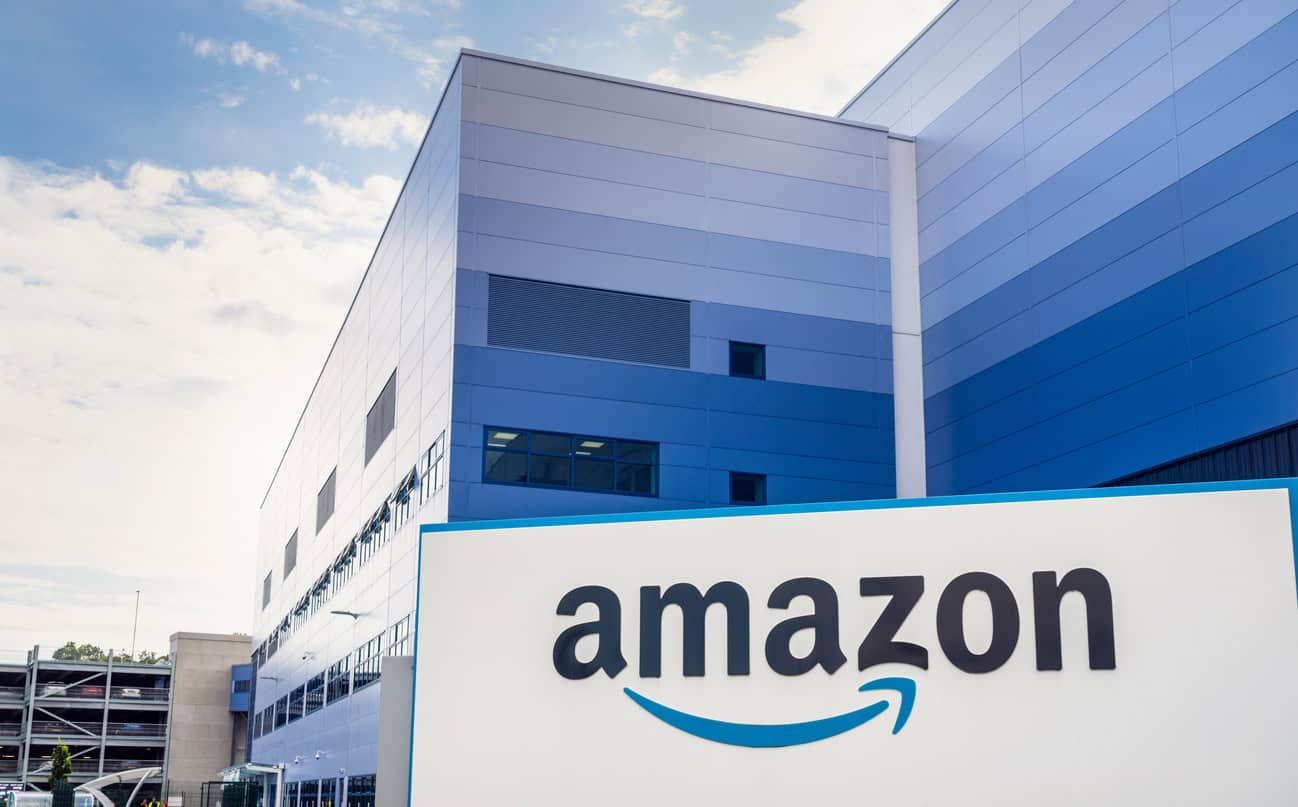
iStock.com/georgeclerk
September 26, 2024
Should All Amazon Employees Return to On-Site Work?
Amazon CEO Andy Jassy recently announced two major initiatives aimed at improving the company’s culture and efficiency. First, he plans to reduce managerial positions by 15% by the end of Q1 2025 to streamline decision-making. Second, starting Jan. 2, 2025, all employees must return to full-time in-office work, a significant shift from the current hybrid model.
“To address the second issue of being better set up to invent, collaborate, and be connected enough to each other and our culture to deliver the absolute best for customers and the business, we’ve decided that we’re going to return to being in the office the way we were before the onset of COVID. When we look back over the last five years, we continue to believe that the advantages of being together in the office are significant. I’ve previously explained these benefits (February 2023 post), but in summary, we’ve observed that it’s easier for our teammates to learn, model, practice, and strengthen our culture; collaborating, brainstorming, and inventing are simpler and more effective; teaching and learning from one another are more seamless; and, teams tend to be better connected to one another.”
Andy Jassy, Amazon CEO, via Amazon
Initially, this edict sparked considerable outrage among Amazon employees, who expressed their frustrations on Slack, describing the requirement as overly strict and regressive compared to pre-pandemic practices. Some employees even humorously suggested negotiating performance improvement plans to leave the company, according to Business Insider, which was contacted directly by an upset employee.
While some commentators argue that increased office attendance could revitalize local businesses in Seattle, many employees remember last year’s backlash against similar policies, which resulted in a walkout. Additionally, Amazon faces external pressures, including a recent ruling by the NLRB that classified it as a joint employer of its Delivery Service Partner drivers, requiring negotiations with the Teamsters Union over wage and safety issues.
As the situation has continued to unfold, Fortune reported that hundreds of Amazon corporate employees voiced their dissatisfaction with CEO Andy Jassy’s decision to require them to return to the office through an anonymous survey. They argue that the mandate will disrupt both their personal lives and workplace productivity, expressing hope that the company will reconsider its decision.
According to Fortune, the survey was shared across Slack, including in a “remote advocacy” channel with over 30,000 members that a previous employee made last year when Amazon announced its original three-day in-office mandate. “As a result, employees who are in favor of remote or hybrid work may have been more likely to respond to the survey and therefore skew the findings,” the outlet noted.
The internal survey used a 5-point rating system, with 1 designating “strongly dissatisfied” and 5 representing “strongly satisfied.” It concluded that, on average, most employees were “strongly dissatisfied” with Jassy’s newly mandated return-to-office schedule. The creators of the survey intend to share the results with Jassy and other Amazon executives in order to “provide them with clear insight into the impact of this policy on employees, including the challenges identified and proposed solutions.”
Moreover, as reported by The Times of India, a former AWS engineer revealed creative strategies employees allegedly employed to circumvent Amazon’s return-to-office mandate. These tactics included “brief office visits during lunch, renaming home Wi-Fi networks to match office ones, and leaving badges for colleagues to scan.”
These revelations, shared in a post on X that quickly amassed over a million views but has since been deleted, have sparked renewed debates about remote work policies in the tech sector as well as the efforts some employees might make to maintain the flexibility they experienced during the pandemic. “When I worked at AWS, engineers went to wild lengths to avoid returning to the office,” John McBride, who worked at AWS until June 2023, said in his post.
One of the commenters on the outlet’s article shared how ironic it seemed for Amazon, now pushing itself as the leader of Cloud services via IaaS, PaaS, and more, to want none of its employees working remotely.
Discussion Questions
How does Amazon’s push for in-office work reflect broader trends in retail regarding work culture and flexibility?
How might enforcing a return-to-office policy impact Amazon’s ability to attract and retain talent in a market that values remote work?
How could employee backlash against Amazon’s workplace changes influence future corporate policies on hybrid and remote work in the retail sector?
Poll
BrainTrust
Mark Ryski
Founder, CEO & Author, HeadCount Corporation
Gary Sankary
Retail Industry Strategy, Esri
Bob Amster
Principal, Retail Technology Group
Recent Discussions







Personally, I think hybrid working is the sensible way forward. It allows workers and employers the best of both worlds. As I have said many times before, employees should be measured by their output not by where they work or, indeed, how many hours they put in. However, the market will resolve this: if Amazon’s policy is too onerous it will lose good workers and it will suffer as a result. It will then have to change.
I’d agree. Hybrid makes sense and not every role requires an “in person” presence. Sure, the company can dictate it, but that doesn’t mean it’s the best decision, even for productivity or collaboration. It certainly is easier to make it “one size fits all” but time will tell whether this is a good move or not.
Yes, Amazon would have to change, but some considerable damage would already have been done.
Mandatory in-office time seems outdated and quaint at this point, especially for a tech company like Amazon. A more workable solution could be to mandate a number of hours in the office and let employees set their own schedules, while honoring the mandate. Or let teams set their in-office days/times so that the collaboration/bonding/facetime impetus is met. Signed, Sitting Barefoot in My Home Office in Pajamas
Amazon employees need to return to work, on-sight, for many reasons, but here is the one that matters the most; the company is requiring it!
Prior to Covid, for maybe a couple hundred years, most jobs were always on-sight. I supposed in this post-pandemic era, many Gen Z employees have never worked on-sight Monday through Friday. Since they are “unfamiliar” with cultural and pragmatic benefits on working on-sight every day, they just don’t get it.
However, Boys and Girls, this is how it will be, and you will need to adjust, and you just might recognize all the many benefits.
This will be the biggest test of Andy Jassy’s leadership since he took over as CEO in July 2021. This staff announcement is the first major tech firm requiring five day a week attendance, and there’s little doubt that workers and employers alike are watching to see what happens. In many ways, work-from-home has become woven into the work lives of knowledge workers around the world, and the threats of quitting over this should be taken very seriously by any employer thinking of making this move. Assuming Jassy holds his ground on the edict, in the short term, the company may experience an exodus of key employees. These will be difficult to fill and it will make Amazon a less desirable employer. But in the longer run, the five day a week requirement will simply become reality at Amazon and with it’s balance sheet full of AWS cash, it will eventually be able to hire the people they need – even if they are required to be in the office five days per week.
Saying that “hybrid work didn’t exist five years ago” is like saying that companies didn’t use data science or robotics in the past. Hybrid work is now embedded into work culture.
Do some teams at Amazon and other workplaces require full time face-to-face team interaction? Sure — but just as surely there are other tech employees who can and do work effectively alone. Telling all employees to “like it or else” is so last century.
Return to the office. It’s called work for a reason. Millions of Americans had to go back to their workplaces during the pandemic, especially those in retail and service industries, facing significant challenges. It’s time to readjust to in-person work like many others have already done. #PerspectiveCheck
My feeling is that Jassy is correct as a general policy, but the way it is being carried out conveys that it’s more of a message than a necessary correction; so “don’t shoot the messenger”? well maybe (you do) if he bungles delivering it.
Amazon’s tremendous influence makes it likely other companies in retail and beyond will mandate more in-office days.
Time-starved workers may feel more inclined to select e-commerce, including e-grocery, for convenience. Fittingly, Amazon launched in-garage delivery in Canada today.
Lisa has an extremely interesting point here – what if the LT strategy, once other companies follow Amazon’s lead, is that the time lost by hybrid workers directly benefits Amazon via growth in its eCommerce and delivery businesses?. If so, that would be an impressive chess move, thinking multiple steps ahead.
If working on site is a requirement of your job then you either work in the office or find another job. The employees at Amazon may not like it, but it’s not their call.
Exactly.
The challenge with many policies or questions about them is using the word “all” – nothing works 100% of the time, and therefore the response has to be negative. It’s not that policies shouldn’t be universally applied, the issue is that there are simply different situations that exist. There are numerous employees with many companies, including Amazon, who work with teams and customers that are scattered across numerous offices in the US and internationally. If you tell them to be in the office 5 days a week, then you can’t also ask them to be on a video call at 4am or at 10pm. That is reality for many of these team members, and that is why hybrid situations will continue to exist for some roles.
As for Amazon specifically, like other high-flying tech companies, they have the added challenge that while they pay well for certain roles, they’re not known for having positive work-life balance already, so any forced return to the office will eventually cause an uptick in attrition.
It’s 100% up to Amazon to decide the type of culture they want to encourage. But if the other business in Seattle becomes the workplace of choice and Amazon starts losing employees in a significant way, then I suspect we’ll see changes at Amazon. This is going to be a bit of a test to see just how far the pendulum has swung in the tech world of information workers and their bosses.
There is a lot of wasted time when people are in the office(water cooler talk, etc.), just like there is when you are working from home (the laundry is done, the dog needs to go outside, etc.).
That being said, company culture is built on relationships and relationships are difficult to build looking at your laptop screen. I wish this were not true but it is.
I bet there are a LOT of CEO’s privately cheering Amazon’s move here.
WFH habits are not going to go away. It will prove difficult for any business to take away that perceived benefit from its employees. The disagreement between top management and employees will get contentious to the point of many employees leaving their jobs (not just at Amazon). The best that employers can hope is for a hybrid situation such as so many days per week “in the office” for all employees in certain departments, and on one or two days per month for all-employee exchanges and personal interactions. Having said that, such mandated appearances at the office must have a purpose ( such as company meetings and important presentations, and produce some tangible positive results.
This makes no sense as a black & white, all or nothing conversation. Pre-pandemic, remote work for most office workers was not even a conversation. The pandemic comes along and all of a sudden the situation is, “we have to figure how this remote work thing NOW.” The pandemic ends and a lot of companies could say, “Gosh, that kind of/sort of worked…kind of. Who knew…???” The unevenness of the return-to-office movement then put all pro’s and con’s at war with each other. Team communication and productivity and the fairness of who could/should/must return to the office. It finally becomes simple to say everybody must come back to the office, and the howls begin. Look at the found time people had discovered while NOT commuting! Life changing! I want that! In fact I want back the years of my life I spent on the freeways in Los Angeles and the trains in metro NYC!
I don’t think this is the end of the conversation about remote work at all. It’s the beginning of a new conversation about balancing all the dynamics of commuting and work and home life. It’s an evolutionary process still in the painful early stages.
For an organization with Amazon’s heritage (i.e. focused on innovation and eager to create a peculiar culture), in-person collaboration carries a heavier than usual importance. The article talks about the cultural importance but I believe the stronger driver is on innovation outcomes. My experience in tech strongly confirm’s Jassey’s point about the need to be F2F for innovation. This is less a philosophical stance than a logistical reality: whiteboarding sessions and working groups are simply more effective face-to-face. Beyond that, the social fabric created through frequent engagement is crucial in creating an environment for innovation to take place. Perhaps a more interesting question is – is a one-size-fits-all policy most appropriate (easy) or should a purposeful strategy based on innovation requirements (hard) be implemented. Based on the decision, and Jassey’s comments on the Amazon’s excessive management layers, I think we understand his position on the matter.
As a supplier to Amazon and someone who is engaged in several Amazon warehouse projects, the answer is YES!! It has become very difficult to locate the right people for project meetings and plan approvals. Those who are working remotely are very reluctant to meet in-person or at the project location. Bring them back!
I think for Amazon it is an interesting discussion of whether you are talking about Amazon retail operations or the AWS cloud tech business. As a retailer, the nature of the business is in person whether it is fulfillment in the warehouse or contact centers. When I first started in retail tech my management sent me to the customer front line to the stores, contact centers and distribution center to understand the business regularly, and it was invaluable. That’s why many retailers have concept stores in their office so management and teams can observe the business first hand. I believe RTO is important there with the usual exceptions made for personal needs like medical, childcare demands etc. It is a bit murkier on the AWS side where we all have seen the discussions around whether pure technology positions benefit as much with RTO or hybrid. There is a lot of room for nuances and details in this discussion.
In a free market, Amazon definitely has a right to set their own policies and employees have the freedom to choose to follow them or seek employment elsewhere. I have personally worked remotely as long ago as 20 years ago, so hybrid is not 4-year-old phenomena. Hybrid seems to work best for most companies where you have team collaboration time of brainstorming, problem solving in-person while also having 1-2 days of home office time where you have flexibility and potentially more time for deep work.
Leadership gets to decide whether to return to the office full-time, part-time, or never. It’s their decision, and they will live with the consequences of it —good or bad. If they have done the research correctly, they know what works and what doesn’t. The pandemic changed the way we worked in 2020 and 2021. As life returned back to normal, some decisions that changed the way we work remained in place. Others didn’t. Even if Amazon’s decision doesn’t sit well with many employees, the leadership must consider that there could be employment issues. They should know that going in and have plans to deal with any number of scenarios due to the decision.
Amazon isn’t the first company to do this, but it may be one of the biggest and most public. The rest of the corporate world will watch to see what happens.
The tone of the message is off putting. First, there’s the use of “We.” It’s not the CEO telling you to return to the office, it’s a nameless, unaccountable “We.” Andy takes credit only for outlining the value of in person.
Second, there’s no value prop. “We” want you here so “We’ll” demand you get here.
I have experienced tremendous value in face-to-face time over online, phone or email exchanges. There’s so much lost when separated by a communication channel. Instead of extolling the personal career virtues of personal interaction (though a comment on it being best for customer and business), an unknown “We” determined you need to be in the office.
Sell it. Make it about your employees and their success. Everyone wants to know what’s in it for them. Don’t lose out on the potential value by employing terrible communications.